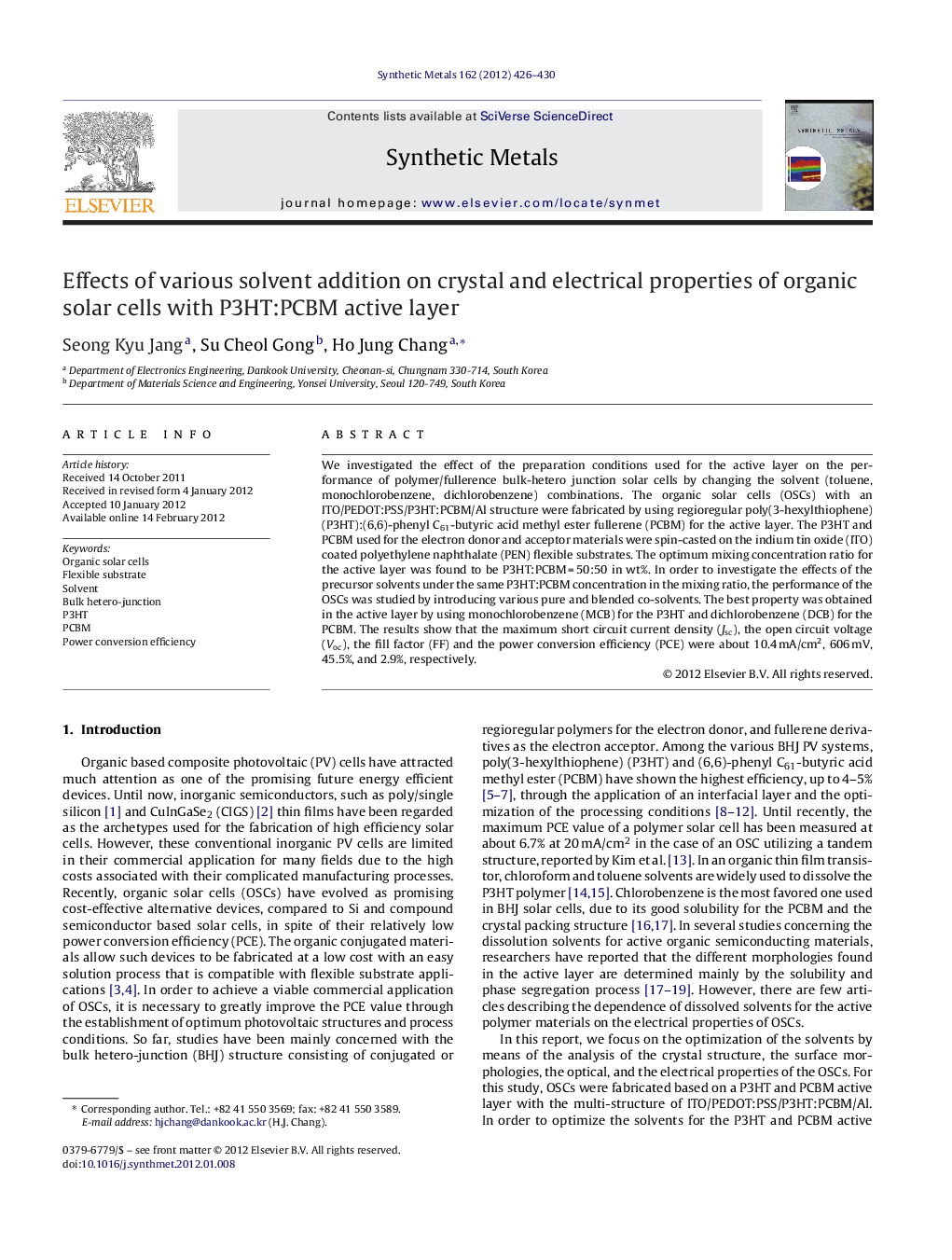| Article ID | Journal | Published Year | Pages | File Type |
|---|---|---|---|---|
| 1442090 | Synthetic Metals | 2012 | 5 Pages |
We investigated the effect of the preparation conditions used for the active layer on the performance of polymer/fullerence bulk-hetero junction solar cells by changing the solvent (toluene, monochlorobenzene, dichlorobenzene) combinations. The organic solar cells (OSCs) with an ITO/PEDOT:PSS/P3HT:PCBM/Al structure were fabricated by using regioregular poly(3-hexylthiophene) (P3HT):(6,6)-phenyl C61-butyric acid methyl ester fullerene (PCBM) for the active layer. The P3HT and PCBM used for the electron donor and acceptor materials were spin-casted on the indium tin oxide (ITO) coated polyethylene naphthalate (PEN) flexible substrates. The optimum mixing concentration ratio for the active layer was found to be P3HT:PCBM = 50:50 in wt%. In order to investigate the effects of the precursor solvents under the same P3HT:PCBM concentration in the mixing ratio, the performance of the OSCs was studied by introducing various pure and blended co-solvents. The best property was obtained in the active layer by using monochlorobenzene (MCB) for the P3HT and dichlorobenzene (DCB) for the PCBM. The results show that the maximum short circuit current density (Jsc), the open circuit voltage (Voc), the fill factor (FF) and the power conversion efficiency (PCE) were about 10.4 mA/cm2, 606 mV, 45.5%, and 2.9%, respectively.
► We prepared flexible organic solar cell with P3HT:PCBM active layer. ► Optical and electrical properties were affected by various dissolution solvents used. ► Best property was obtained in active layer by using blended mono- and dichlorobenzene. ► Improved property caused by enhanced crystallinity, light absorption and rough surface. ► This may be due to high vapor density and low solubility of the mixing solvents.
